Hyde De Villaine, California
2021 Releases
Exclusive to Corney & Barrow in the UK
Introduction
Hyde de Villaine is a union of two great wine families, a meeting of the best of Napa and Burgundy.
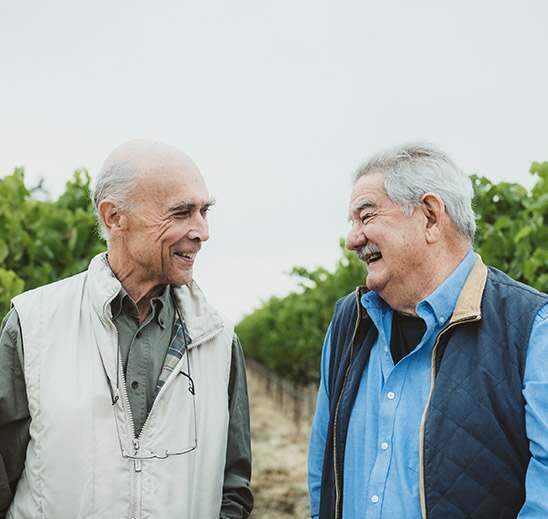
Its enviable foothold in Carneros, at the southern end of the Napa valley, was made possible by Californian viticulturist Larry Hyde (pictured right opposite), of Napa’s famous Hyde Vineyards.
The French contingent is of course Aubert de Villaine (pictured left opposite), best known as co-manager of Domaine de la Romanée-Conti.
The crucial link was Pamela de Villaine – Aubert’s wife and Larry Hyde’s cousin.
When this collaboration was established, in 2000, HdV (as it is known for short) was given the pick of Hyde Vineyards’ 156 acres (63 hectares). 19 acres (7.7ha) were chosen, which today provide the fruit for Belle Cousine (a Bordeaux blend), Californio (a Syrah, yes with an ‘o’), the Ygnacia Pinot Noir and the two Chardonnays. The sixth wine, Ysabel, is a Sonoma Pinot Noir.
The remainder of Hyde Vineyards’ production is sourced by many of Napa’s hallowed names, such as Kistler and Ramey – some 40 clients in all, with as many again on a waiting list.
VINTAGE INSIGHTS
As always, this year’s releases span three vintages. These are 2017 for the ‘Californio’ Syrah and Belle Cousine, 2018 for the Pinot Noirs and the HDV Chardonnay, and 2019 for Le Début, the younger vines Chardonnay.
The 2017 vintage
As HdV’s James Eyer puts it, “The 2017 vintage will always be remembered.” This was a year in which harvest was swiftly followed by wildfires. The wines were fortunately spared the devastation visited on the area. A year of high quality reds, exemplified by HdV’s Belle Cousine and ‘Californio’ Syrah.
Winter 2016-17 was wet and cold, allowing the vines to rest after the productive 2016. Bud break occurred in March, amid fluctuating temperatures – frigid nights and generally warm days, with some rain during the early stages of flowering. These conditions resulted in a low, uneven fruit set.
A warm, dry summer culminated in two major heatwaves in early September, which caused the vines to shut down and ripeness and acidity levels to flatline for the next three weeks. In late September, the vines came back to life and gave one last push, resulting in wines of harmony and freshness.
Harvest started in the third week of August, finishing by the first week of October, just before fire scorched through Napa and Sonoma counties.
The 2018 vintage
A gentle season, making for wines of aroma and elegance. A vintage particularly suited to Pinot Noir in fact, which is fortunate given this year’s offer!
February saw abundant rains, followed by generous sunlight in spring and early summer. Both bud break and flowering occurred slightly late, but under ideal weather conditions, making for a plentiful and even fruit set.
Summer brought generous sun during the day and cooler marine influences, virtually uninterrupted by major heat spikes. The relatively mild summer followed by extended autumn sunshine and moderate heat created near-ideal conditions for the fruit to accumulate flavour complexity with gradual increases in sugar levels.
The 2019 vintage
An exciting vintage of balance, concentration, and purity of flavours, focused by fresh acidity.
A dry start to winter was followed by heavy rains, which lasted into early spring. The late rains resulted in high vegetative vigour, a lower-than-average fruit set and generally challenging viticultural conditions.
However, summer came up trumps with exceptional weather – cool, blanketing fog in the mornings followed by warm sunny afternoons. These optimal conditions made for a lengthy growing season, allowing the fruit to slowly ripen and preserve the finesse and freshness of the vintage.
CARNEROS & HYDE VINEYARDS
Carneros spans the southern end of both Napa and Sonoma counties, benefitting from warmth from the north and the cooling influences of the misty San Pablo Bay.
Phylloxera decimated the vineyards of Carneros in the late 1900s and Prohibition slowed the recovery. By the 1970s, there was growing recognition of a typicity of style and in the 1980s, planting accelerated.
Carneros nestles in the low hills of the Macayamas mountains. Although the majority is in Sonoma, the wines may be labelled as Sonoma or Napa AVA (American Viticultural Area).
Proximity to San Pablo Bay is key, the fogs and coastal breezes, channelled through the Petaluma Gap, providing a cooling influence and allowing for a prolonged growing season. Carneros won AVA status in its own right in 1983.
HdV’s wines are from a near-contiguous series of plots within Hyde Vineyards, on gently rolling hills, facing southeast.
The Chardonnay and Syrah are planted on shallow, loamy soils over ancient alluvial terraces and hard clay. The Merlot and Cabernet are clustered at the northern end of the vineyard, further from the cooling fog of the bay, the better to ripen. The soils are deeper here too and the south-east slopes are steeper.
The Pinot Noir for Ysabel, comes from a joint venture with Van der Kamp Vineyards, planted on Mount Sonoma, above the temperature inversion layer at around 1400 feet (427m) elevation – above the level of Sonoma’s morning fogs. Cooler earlier in the day than Hyde Vineyards, the fruit matures around two weeks later, with a consequently later harvest.
The temperate Carneros climate prolongs the growing season, allowing the vines to steadily build intensity and complexity whilst retaining acidity. Drainage is helped by ancient creek beds which lie between the topsoil and the clay pan. Enough moisture is generally retained to make irrigation unnecessary.
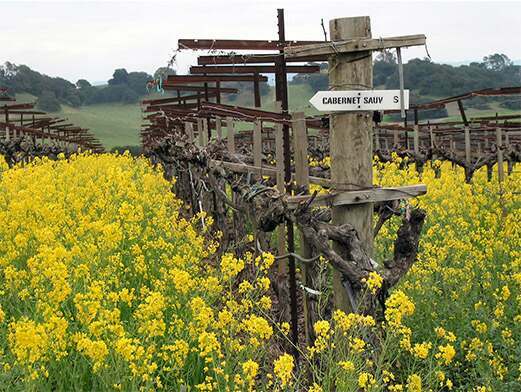
THE WINES
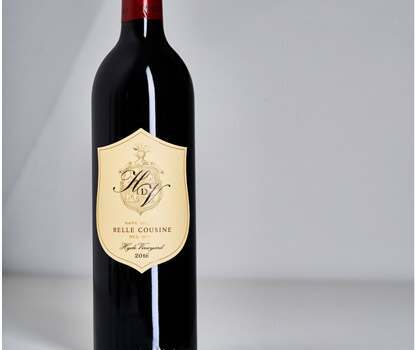
BELLE COUSINE
HDV BELLE COUSINE 2017
Corney & Barrow Score 17.5+
Recommended drinking from 2023–2030
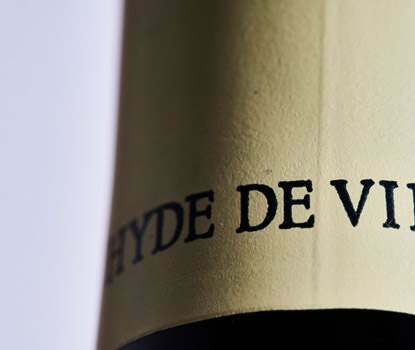
'CALIFORNIO' SYRAH
HDV 'CALIFORNIO' SYRAH 2017
Corney & Barrow Score 18
Recommended drinking from 2023–2030
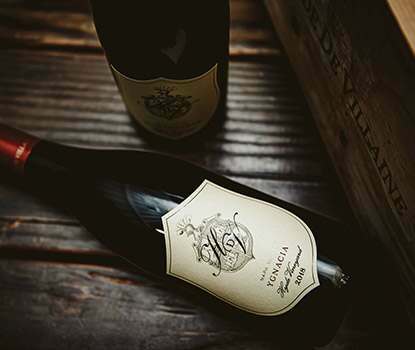
PINOT NOIR
Good things come to those who wait – but it really was a long wait for HdV’s first Pinot Noir. Now we have two: one from Sonoma, the other from Napa’s Hyde Vineyard.
These 2018s were fascinating to taste side-by-side, the cool, bright cranberry character of Sonoma’s Ysabel contrasting with the darker cherry and earthy minerality of Napa’s Ygnacia. Vosne-Romanée and Gevrey-Chambertin respectively, perhaps…?
HDV ‘YSABEL’ PINOT NOIR 2018
Corney & Barrow Score 17.5
Recommended drinking from 2022–2028
HDV ‘YGNACIA’ PINOT NOIR 2018
Corney & Barrow Score 18
Recommended drinking from 2022–2028
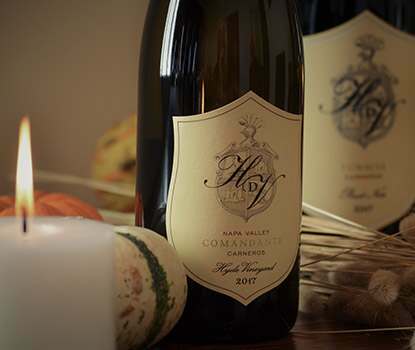
CHARDONNAY
LE DÉBUT CHARDONNAY 2019
Corney & Barrow Score 17.5
Recommended drinking from 2022–2026
HDV CHARDONNAY 2018
Corney & Barrow Score 18.5
Recommended drinking from 2022–2028
HDV COMANDANTE CHARDONNAY 2019
Corney & Barrow Score 19
Recommended drinking from 2022–2028+
